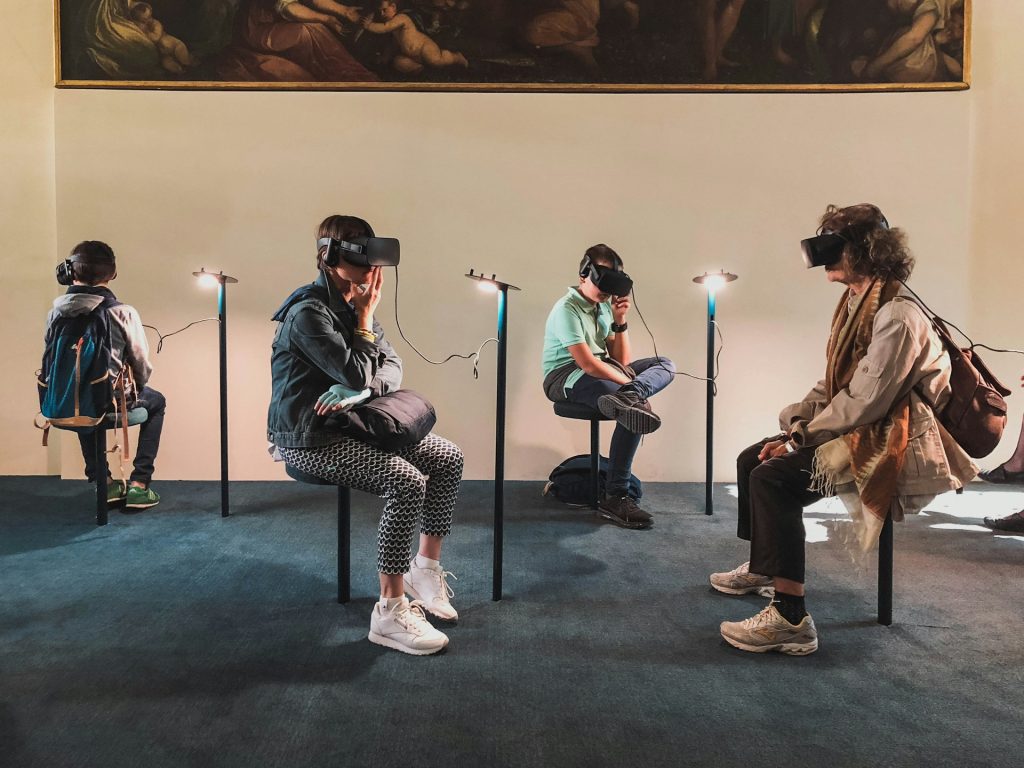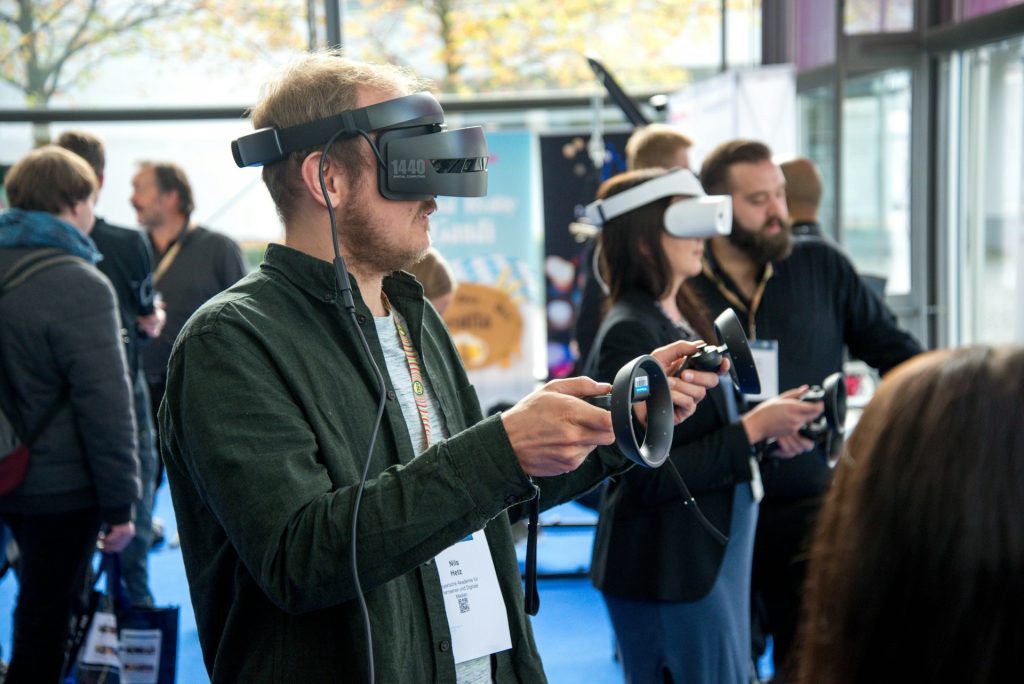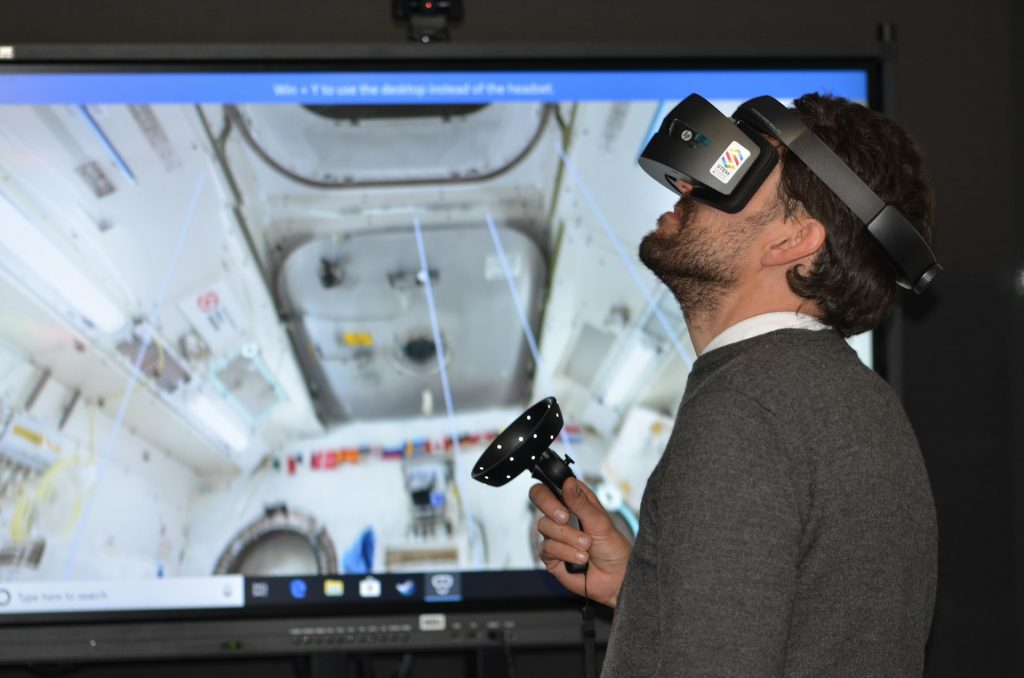Virtual reality (VR) technology has emerged as a transformative force, altering the way we perceive and engage with the world. From healthcare to education, VR has made significant inroads, delivering immersive experiences that redefine traditional norms. In this exploration, we delve into the genesis of VR, its evolution, the diverse sectors it influences, the advantages it presents, the hurdles it confronts, and the exciting prospects on the horizon.

Understanding Virtual Reality Technology
Before delving into its applications, grasping the essence of VR is paramount. VR entails a computer-generated simulation crafting an artificial environment for users. By donning a VR headset, individuals are transported into a lifelike realm complete with 3D graphics, sound, and tangible interaction.
The Concept of Virtual Reality
The roots of VR trace back to the 1960s, with researchers conceptualizing simulated realities. It wasn’t until the late 1980s and early 1990s that consumer-grade headsets propelled VR into popular consciousness. Since then, the technology has matured, offering more immersive and interactive encounters.
The Evolution of Virtual Reality Technology
Advancements in hardware and software have propelled VR to new heights. High-resolution displays, sophisticated motion tracking systems, and realistic haptic feedback devices contribute to a more convincing virtual experience. The once bulky and limited VR headsets have evolved into sleek, high-tech apparatuses offering unparalleled immersion.

The Impact of Virtual Reality on Various Industries
VR’s disruptive influence extends across diverse industries, reshaping their operational landscapes and audience engagement strategies. Let’s explore how VR has left its mark on key sectors.
Virtual Reality in Healthcare
In healthcare, VR serves as a pivotal tool for training and therapy. Surgeons refine their skills through virtual surgeries, minimizing real-world errors. VR therapy aids in treating mental health conditions, offering controlled exposure to triggers, fostering lasting improvements.
Virtual Reality in Education
Education undergoes a paradigm shift with VR, transcending traditional confines. Students embark on virtual journeys, exploring historical landmarks, enhancing their comprehension through immersive experiences. Virtual reality transforms classrooms into dynamic learning spaces.
The Benefits of Virtual Reality Technology
Beyond industry impact, VR boasts several advantages that underscore its significance.
Enhancing Learning Experiences
VR revolutionizes education, providing practical, engaging experiences. Realistic simulations enable students to acquire skills, sharpen problem-solving abilities, and bolster critical thinking in a risk-free virtual environment.
Improving Training and Simulation
Industries like aviation and manufacturing leverage VR for lifelike simulations. Trainees practice complex tasks, refining skills without real-world consequences. This immersive approach enhances outcomes and efficiency.
Boosting Entertainment and Gaming
Virtual reality gaming elevates the gaming experience, immersing players in interactive worlds. VR has the potential to redefine the gaming industry, offering unprecedented levels of immersion.
The Challenges and Limitations of Virtual Reality
Despite its promise, VR grapples with challenges that merit attention.
Technical Challenges
Creating realistic virtual environments demands potent hardware and advanced graphics. Tackling issues like motion sickness and enhancing display resolution remain focal points for developers.
Health Concerns
Extended VR headset use can lead to discomfort, eye strain, and motion sickness. Addressing these health concerns is crucial for widespread adoption.
The Future of Virtual Reality Technology
As VR evolves, emerging trends and applications pave the way for an exciting future.
Emerging Trends in Virtual Reality
Wireless and standalone headsets offer increased freedom of movement. Augmented reality (AR) and mixed reality (MR) are converging with VR, unlocking novel possibilities for immersive experiences.
Potential Applications of Virtual Reality
VR’s applications extend beyond existing industries. From architecture to tourism, VR is set to reshape how we work, play, and interact. Ongoing advancements herald a future where VR seamlessly integrates into daily life.

In conclusion, virtual reality technology stands as a cornerstone in today’s landscape. Its capacity to create immersive experiences has disrupted industries and promises to redefine how we learn, train, and engage with our surroundings. Overcoming challenges and pushing boundaries, VR’s seamless integration into our lives appears imminent, offering a future where the virtual realm is an intrinsic part of our reality.





